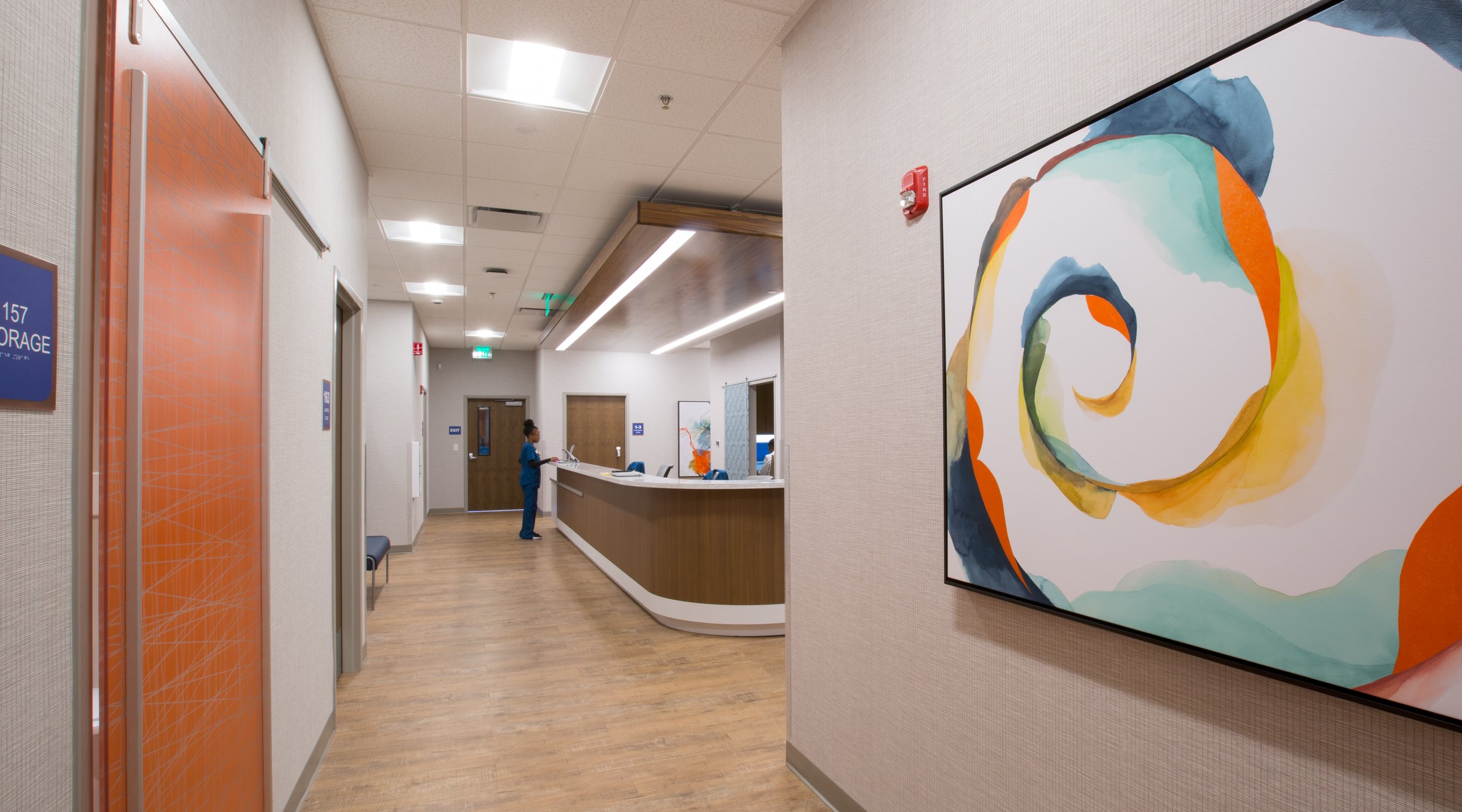Let’s Talk About Sterile Spaces: Why Patient Rooms Need a Warmer Touch
Today, I found myself in a space many of us visit at some point—my doctor’s office. I was there for a checkup and some shots. A seemingly routine visit, but what struck me wasn’t the procedure itself—it was the space.
From the moment I walked into the exam room, I was overwhelmed. Bright, fluorescent lights, bare white walls, clinical equipment on display… the room was clean, yes—but also cold. Sterile. Impersonal. And for someone who’s always been afraid of needles (yes, still am at 28 years old), that atmosphere made everything worse. I tensed up, panicked, and ultimately felt dizzy. It reminded me how much our environment can impact our emotional and physical well-being, especially in healthcare.
So why are we still designing patient spaces like we’re stuck in the 1990s?
The Case for Comfort in Clinical Design
Patient rooms - whether in hospitals, outpatient clinics, or wellness centers - should be more than functional. They should feel safe, calm, and human.
Research in healthcare design shows that environments that are warm, thoughtfully lit, and visually comforting can actually help reduce patient anxiety, improve outcomes, and create a more positive overall experience.
1. Lighting Matters
Harsh and bright overhead lighting can trigger tension and unease. Dimmer switches, warm-tone bulbs, or even natural light (when possible) can significantly soften the feel of a room. A space that mimics natural daylight feels more welcoming and less intimidating.
2. Color Psychology in Action
All-white walls may feel “clean” to designers, but they can feel cold and clinical to patients. Incorporating soothing tones like soft blues, muted greens, or warm neutrals can help calm the nervous system. Even a small splash of color—like an accent wall or piece of art—can shift the mood.
3. Soft Furnishings & Textures
A room shouldn’t feel like a lab. Adding fabric elements like curtains, upholstered chairs, or textured wall panels helps absorb sound and soften the space. Even a cozy throw pillow or a subtle pattern can feel surprisingly comforting.
4. Art & Personal Touches
Artwork, photography, or quotes on the wall—especially when culturally inclusive and emotionally uplifting—can help patients feel less like a number and more like a person. Nature-inspired prints and abstract pieces work wonders.
5. Furniture Placement & Flow
Cluttered equipment or impersonal layouts send the wrong message. A thoughtful layout that prioritizes conversation, comfort, and care can help patients feel more in control and less overwhelmed.
Why It Matters
When we design patient rooms with empathy and warmth in mind, we send a powerful message: We see you. We care about your experience. Your emotional comfort matters here. Healthcare will always have clinical parts, we can’t (and shouldn’t) eliminate that. But we can design rooms that support not only treatment but also trust, relaxation, and healing.
As someone who spent part of today panicking under the bright lights of a sterile room, I know how much better it would have felt to walk into a space that welcomed me with warmth. Because every patient deserves to feel safe, grounded, and cared for. Even when they’re afraid of shots.
We consider the influence and impact that space has on both employees and patients, so you can put your trust in us to deliver a meaningful space in any healthcare facility. Don’t forget to check out how we transformed Aylo’s Medical Office building- your project could be the next change maker in the industry.


